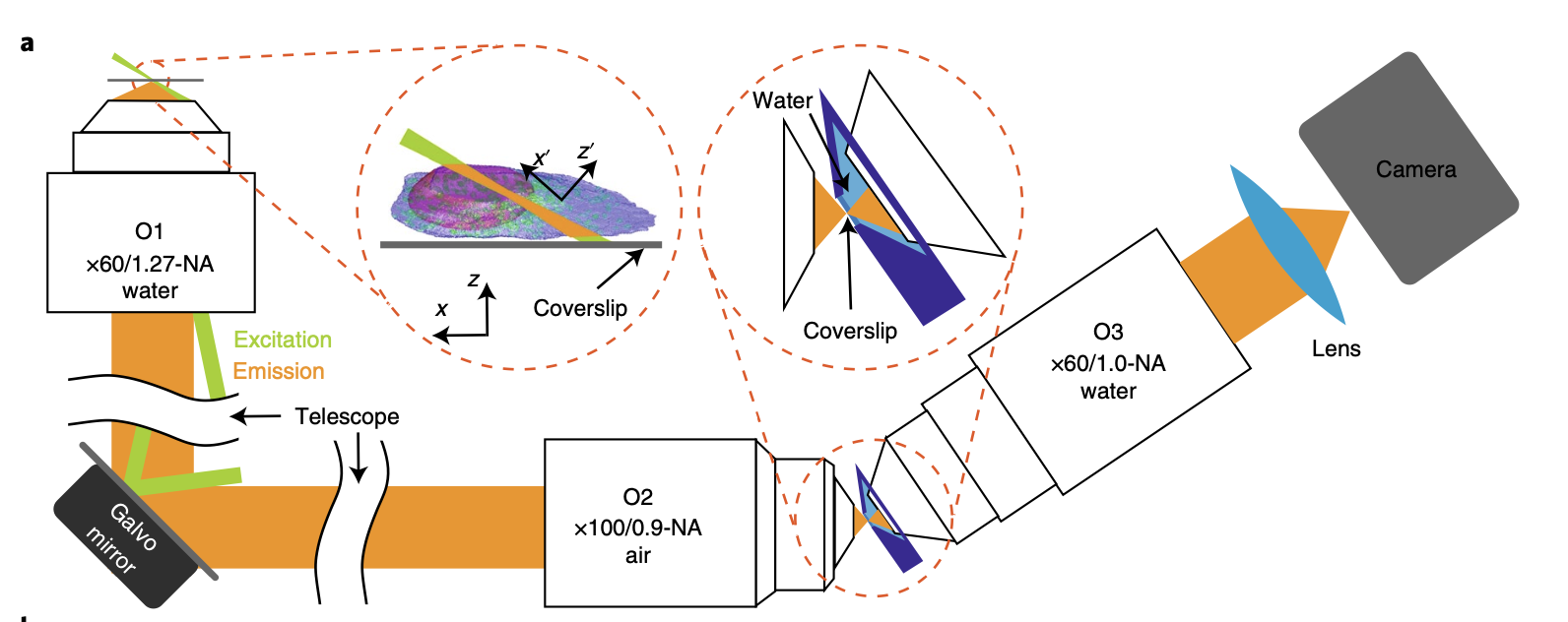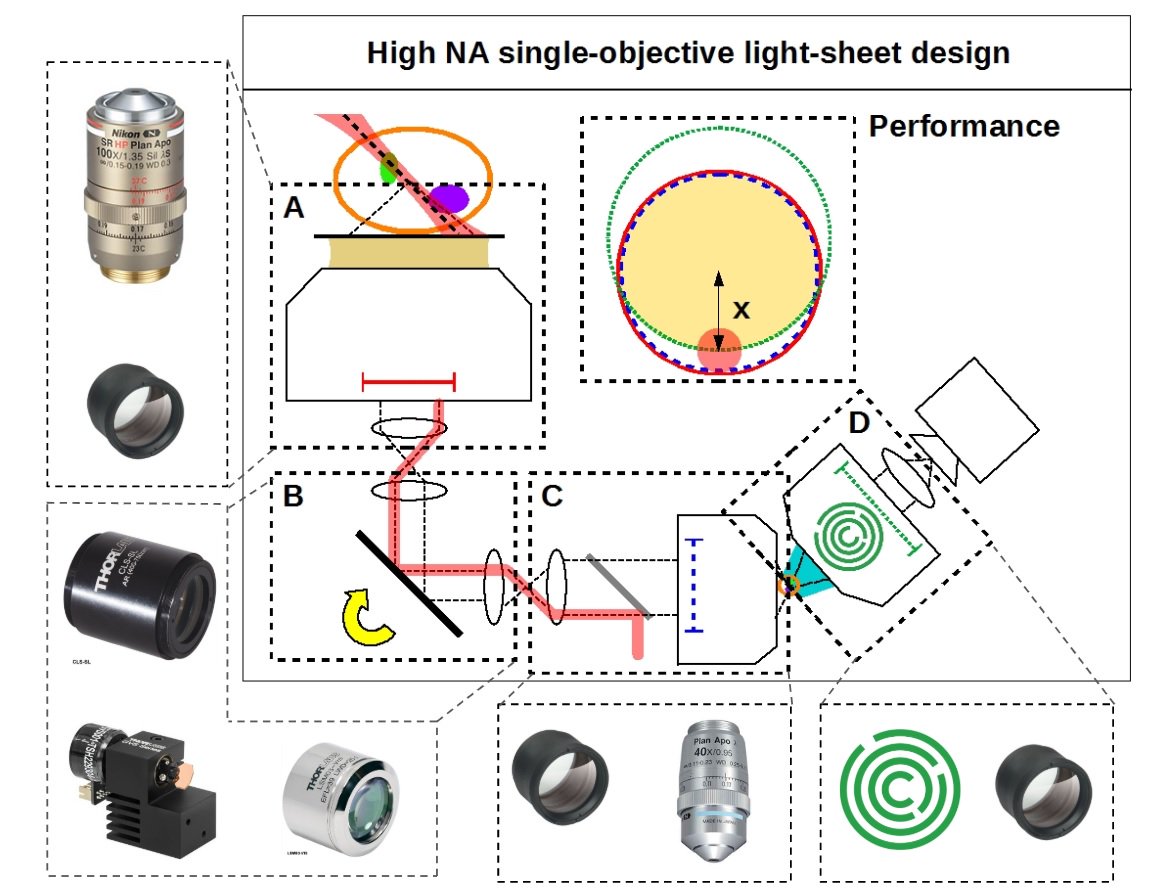Problem with single-objective lightsheet
The biggest challenge with single-objective light sheet is that illumination plane forms an angle with respect to the focal plane of the objective. If the center of the image is in focus, the edges will be out of focus. This can be corrected if the sensor is placed at an angle, for example. However, the extra challenge is that spherical aberrations that appear because of focusing at different depths will still be present and unaccounted for.
To avoid this problem, it is possible to form an intermediate image that is later focus through the same medium in which the sample sits. In this way, the entire field of view is subject to the same amount of aberrations. This idea can be seen in the image below [@yang2019Epi-illumination SPIM for volumetric imaging with high spatial-temporal resolution]

By building a custom tertiary objective, it is possible to tune the optical properties such that one does not need to deal with different media and alignment of non-orthogonal planes. This is what gave rise to Snouty[@millett-sikking2019], which achieves a relatively high NA (1.0).

Tags: #microscopy #light-sheet
Backlinks
These are the other notes that link to this one.
